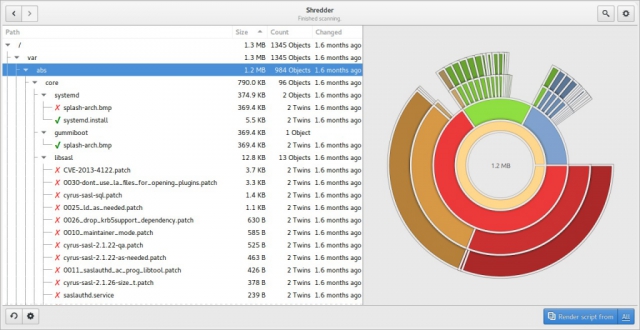Yes many already know and use BleachBit, with BleachBit you can free cache, delete cookies, clear Internet history, shred temporary files, delete logs, and discard junk you didn't know was there. Shredder goes a step further in identifying:
* Duplicate Files and duplicate directories.
* Nonstripped binaries (i.e. binaries with debug symbols)
* Broken symbolic links.
* Empty files and directories.
* Files with broken user or/and group ID.
Shredder displays search results in a hierarchical list and a visual pie chart of the selected folder. For search, you can use various filters (file size, name, modification time, etc.), except when comparing files checksum mode supported byte-a-byte mapping, a mode check only new files and much more.
It can also generate a script file which you can automatically run using rmlint from the command line. It will work with btrfs file systems too. Always good to backup your files before you do deep cleaning.
See
Graphical user interface — rmlint (2.8.0 Maidenly Moose) documentation#
technology #
opensource #
linux #
shredder #
duplicatefilesAs of rmlint (\geq 2.4.0) a GUI frontend called Shredder is shipped alongside of rmlint. It is written in Python and uses no external dependencies beside gtk+ (\geq 3.14) and PyGObject. The user interface is still in development. Use at your own risk! There is a safety net though: Every file will be re-checked before its deletion. If you...

